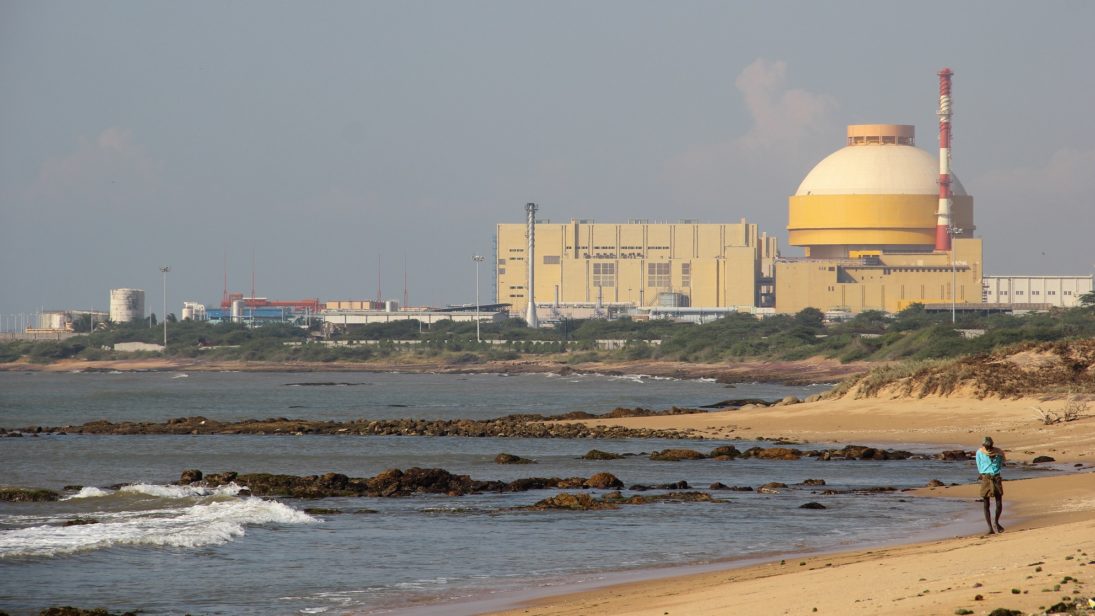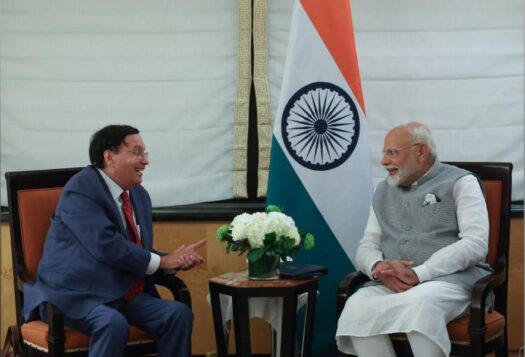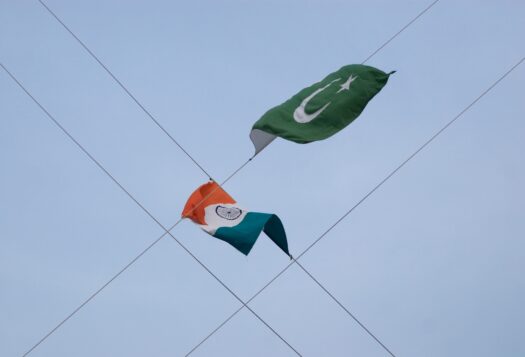
While many are familiar with the impact of nuclearization of relations between India and Pakistan, there is less familiarity with its impact on South Asia’s non-nuclear states. Dr. Frank Hofmann’s term, “pink flamingo” applies to the dangers of the South Asian nuclear environment, where the predictable risks of nuclear programs in the region are largely ignored by policymakers in non-nuclear states. However, these states cannot afford to remain ignorant of the untold security hazards of these developments. The emerging South Asian nuclear environment is not a simple bilateral matter, as there are potential dangers to the region that extend beyond the immediate impact of a mushroom cloud in either India or Pakistan. Sri Lanka is an intriguing case of a non-nuclear state impacted by the nuclearization of South Asia, since its sole neighbor, India, is a nuclear-armed state.
Sri Lanka’s challenges in the South Asian nuclear context emerge from three different spheres: first, it is subject to third-party effects of the strategic conduct of nuclear states in the region during conflict escalation. Second, its unique geography renders it vulnerable to the risks emanating from the mismanagement and even smuggling of radioactive and nuclear materials. Third, its geographic proximity to India means that Sri Lanka is susceptible to any spillover effects from accidents at nuclear facilities in southern India.
Strategic Conduct in South Asia
Sri Lanka, a signatory of the Nuclear Nonproliferation Treaty (NPT), has maintained a clear stance on nuclear proliferation and disarmament in the past. In October 1964, at the Second Non-Aligned Movement Summit, then Prime Minister Sirimavo Bandaranaike proposed the creation of a nuclear-weapons-free zone in the Indian Ocean. Since then, Sri Lanka has proposed and supported the creation of nuclear-weapons-free-zones in Latin America, Southeast Asia, Africa, and beyond. Under the current geopolitical conditions, however, Sri Lanka has been unable to extricate itself from the strategic jockeying of nuclear-armed states in the region. With India planning to develop the deep water Trincomalee harbor in the country’s northeast for commercial purposes and China already having developed and obtained control of Hambantota, it is clear that both are vying to deepen economic and political ties with Sri Lanka.

This strategic competition presents a unique set of challenges for Sri Lanka: if conflict between nuclear-armed powers in Southern Asia crosses the nuclear threshold, Sri Lanka may find itself in a difficult position to ensure it is not caught in the middle of the chaos. One scenario that could play out includes Sri Lanka’s Trincomalee harbor, which is already home to Sri Lankan naval and air force bases. A situation is conceivable in which this strategically-located port could be used by these states, particularly China, to dock its nuclear-armed submarines. In such a situation, if a conflict escalates to the strategic level between India and China, the port may be vulnerable to attack. The fears of being caught in the crossfire are grounded in history: the Japanese bombed the port to sink British navy ships docked at Trincomalee during World War II. Though the situation may seem improbable now, since Sri Lanka does not permit China to dock submarines at Sri Lankan ports (having rejected Beijing’s latest request to do so), this could change in the future if Colombo is not cautious. Consequently, Colombo must remain vigilant in preventing nuclear-armed states in the region from exploiting its ports for their nuclear interests.
Mismanagement of Radioactive Materials
Nuclear risks for Sri Lanka extend beyond nuclear competition. Even the mismanagement of radioactive materials during shipping could be dangerous to the local population. In the past, there have been notable incidents where the Sri Lanka Customs Authority detected radioactive cargo that had been exposed to the radiation from Japan’s Fukushima reactor meltdown on ships passing through Sri Lankan ports. Such incidents highlight that Sri Lanka, as an island nation and transit country with a multitude of ports, faces risks pertaining to the mismanagement of radioactive materials in its harbors. However, preparedness for such incidents at legal entry points alone is insufficient, as Sri Lanka’s ideal positioning for transit given its vast coastline provides easy entry and exit to smugglers as well. The Palk Strait and the Gulf of Mannar, maritime strips located between India and Sri Lanka, are infamously known for illegal activities such as unregulated fishing and drugs and weapons smuggling. While such activities reached their peak during the Sri Lankan Civil War, criminal organizations still use the area for smuggling purposes, exploiting the financially-desperate local fishermen. The proliferation of fissile and radioactive materials through these illicit networks is therefore a danger India and Sri Lanka should jointly address.
Spillover Effects from Indian Nuclear Reactors
Finally, Sri Lanka also faces risks from the mismanagement of nuclear reactors in the region, specifically India’s Kalpakkam and Kudankulam power plants located along the Coromandel Coast. Any mishap at these two sites could expose Sri Lanka to catastrophic radiation risks through travelling winds and sea water. This is not an idle danger: frequently reported health hazards due to previous radioactive leaks into the atmosphere surround Kalpakkam, while, in Kudankulam, civil society groups have raised concerns over the safety margins of the project since its inception. At present, Kudankalum requires water as a coolant, which it draws from the Gulf of Mannar; although this water then goes through four rounds of desalination, there are concerns over the brine and chemical waste from desalination filtering back into the gulf. Not only does this already pose a safety hazard to the population on the Coromandel Coast, but should a potential radiological catastrophe take place in Kudankulam, all of western Sri Lanka, including Colombo, will face its negative consequences.
At present, Sri Lanka’s organizational structure for disaster management includes preemptive radiation disaster warning centers across the country, as well as the ability to gain information from the International Atomic Energy Agency (IAEA) regarding Indian nuclear reactors and accidents therein, since both countries abide by the Convention of Nuclear Safety, the Convention on Assistance in Case of a Nuclear Accident or Radiological Emergency, and the Convention on Early Notification of a Nuclear Accident. Despite these international legal mechanisms, there remain deficiencies in Sri Lanka’s disaster management and preparedness framework. While the Sri Lanka Atomic Energy Board (AEB) is equipped and tasked with monitoring existing radiological levels in Sri Lanka, this does not provide adequate protection if levels reach disastrous heights. Further, in 2009, the International Atomic Energy Agency (IAEA) proposed that Sri Lanka and India explore an agreement on radiological emergency preparedness planning, but this yielded no results. Subsequently, operating procedure for the evacuation of the affected populous in a nuclear accident scenario has yet to be addressed by the Sri Lankan government.
Conclusion
Sri Lanka cannot overlook the nuclear risks faced by its own population and should continue to maintain its commitment towards global nuclear disarmament. According to the National Report presented at the Seventh Review Meeting of Contracting Parties of the IAEA Convention on Nuclear Safety in 2017, Sri Lanka is slowly taking such measures to ensure protection from potential radiological hazards. However, in addition to preparing for the risks outlined above, Sri Lankan policymakers should also focus on developing a technologically well-trained workforce that is informed on matters of nuclear safety, while also making the inhabitants of vulnerable areas more aware of the possible nuclear dangers they face. From an optimist’s perspective, this situation offers an opportunity for Sri Lanka to conduct itself in an actively neutral manner, harnessing its non-aligned foreign policy approach to promote nuclear risk reduction in South Asia and the Indian Ocean Region.
***


